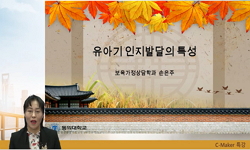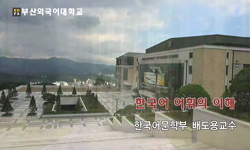The purpose of this study is to research into ``floral language``, a symbol that a flower and a plant imply. The ``floral language`` is a non-verbal language, which functions as a means to communicate ideas and feelings to the other party in a metapho...
http://chineseinput.net/에서 pinyin(병음)방식으로 중국어를 변환할 수 있습니다.
변환된 중국어를 복사하여 사용하시면 됩니다.
- 中文 을 입력하시려면 zhongwen을 입력하시고 space를누르시면됩니다.
- 北京 을 입력하시려면 beijing을 입력하시고 space를 누르시면 됩니다.

화훼의 상징적 알레고리를 통한 꽃말에 관한 연구 = A Study of Floral Languages of Flowers of Ornamental Plants through Symbolic Allegory
한글로보기https://www.riss.kr/link?id=A99578830
- 저자
- 발행기관
- 학술지명
- 권호사항
-
발행연도
2012
-
작성언어
-
-
주제어
화훼 ; 상징 ; 알레고리 ; 꽃말 ; 한국화예 ; 심상예술 ; 의상예술 ; Flowers of Ornamental Plants ; Symbolic ; Allegory ; Floral Languages ; Korean Floral Art ; Art of Mental Image ; Art of Imago
-
KDC
600
-
등재정보
KCI등재후보
-
자료형태
학술저널
-
수록면
39-59(21쪽)
- 제공처
-
0
상세조회 -
0
다운로드
부가정보
다국어 초록 (Multilingual Abstract)
The purpose of this study is to research into ``floral language``, a symbol that a flower and a plant imply. The ``floral language`` is a non-verbal language, which functions as a means to communicate ideas and feelings to the other party in a metaphorical way. The Korean Floral Art is art of mental image which embodies soul of the artist by the medium of flowers and plants, and art of imago that expresses ideas and intentions of the artist. To express the art spirit, the inner world of the artist, is closely associated with imagination of the floral artist. Imagination can be said as the source of the art form. Imagination, a kind of mental activity, vitalizes creative activity inspired by any object, enlarges it, and allows extensive thinking. Thus, the symbolism of ``floral language`` is combined with imagination of the floral artists, and puts their inner world into it, and becomes a major factor in the creative activity of the Korean floral art. The floral language may extend the domains to create floral art and understand flowers and ornamental plants. Where some floral art works are focusing on exterior forms, the floral languages will complement to the exterior forms with their contents (meanings). In addition, it seems a significant task to make a discussion about the floral languages in the context of social, cultural communication, delivering complicated and diverse feelings of human beings, in a similar way of verbal language. Furthermore, it can extend the thinking of the creators in the process of creating the Korean floral art, having influences upon expression of truth of the world of spirit. Appreciating ``floral languages`` may open up possibilities to a wide variety of cultural contents, and further contribute to spreading pop culture of floral art.
동일학술지(권/호) 다른 논문
-
현대 도자화기에 대한 연구 -화예와의 관계를 중심으로-
- 한국화예디자인학회
- 박경순 ( Kyoung Soon Park )
- 2012
- KCI등재후보
-
국제기능올림픽 대회가 화훼장식 작품의 상징성에 미친 영향
- 한국화예디자인학회
- 박미옥 ( Mi Ok Park )
- 2012
- KCI등재후보
-
나무줄기의 특성을 활용한 화예디자인 연구 -오브제디자인을 중심으로-
- 한국화예디자인학회
- 정명자 ( Myoung Ja Jung )
- 2012
- KCI등재후보
-
서양명화 속에 나타난 꽃의 효용성에 관한 연구 -17세기~19세기를 중심으로-
- 한국화예디자인학회
- 홍윤주 ( Yun Joo Hong )
- 2012
- KCI등재후보




 KISS
KISS






